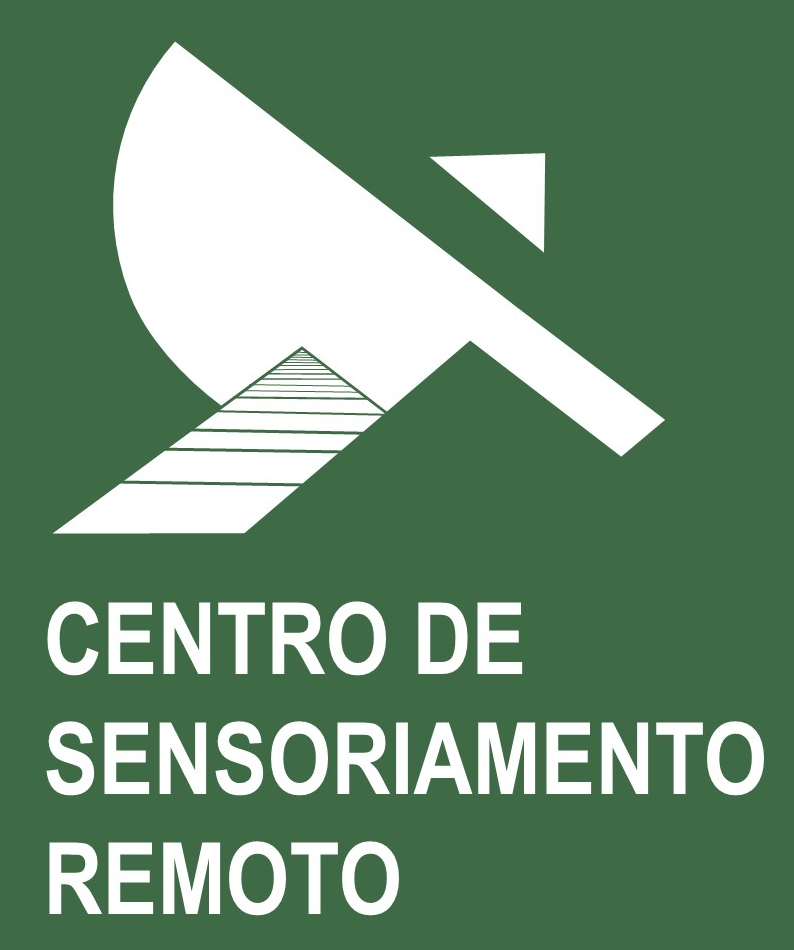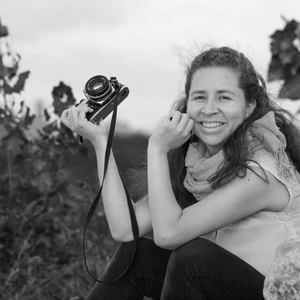2024

Carlos Ivan Salinas Espinoza
Soy biólogo manejador de recursos naturales, estudiando mi Doctorado en Ciencias Biológicas en la Universidad Autónoma de Nayarit en México. Mi investigación se titula “Valoración económica de los servicios ecosistémicos de Marismas Nacionales” en este trabajo se analizan los cambios en el valor económico de los servicios ecosistémicos de Marismas Nacionales que es una Reserva de la Biosfera en la costa noroeste de México. Este análisis se realiza ante diferentes escenarios de cambio de uso del suelo, analizando los patrones de cambio de 1986 a 2022 y realizando proyecciones hasta el año 2050.
2023

Nicolò Perello
I am a Mathematical Engineer graduated from the Polytechnic of Turin (Italy). My specialization lies in mathematical modeling and simulations, with a particular focus on environmental problems. Currently, I am pursuing a Ph.D. at the University of Genoa (Italy) in Risk, Security, and Vulnerability, with a focus on natural disasters and Climate Change. My research is about wildfire risk modeling, mainly related to wildfire danger rating systems and wildfire simulators. The primary objective of my research is to develop operational tools for Civil Protection systems.

Elena Dauster
I am a Geophysics and Meteorology student at the University of Edinburgh, interested in understanding the intersection of biodiversity conservation and Indigenous and Traditional knowledge as essential tools in addressing the climate crisis and ecological breakdown. My research focuses on unraveling how industries access and utilize native species in Brazil, while also addressing the issue of traceability. The ultimate goal of my work is to contribute to the development of transparent environmental policies that facilitate fair and equitable benefit-sharing. Recognizing the significance of a decolonized approach to environmental science, my work seeks to elevate the livelihoods of Indigenous and Traditional communities and empower them in their vital role of safeguarding the land and ensuring sustainable land use.

Jan Börner
Jan Börner is Professor for Economics of Sustainable Land Use & Bioeconomy at the University of Bonn, Germany, with applied research experience in Latin America, Africa, and Europe. Between 2012 and 2017, he was Robert Bosch Junior Professor for Economics of Sustainable Natural Resource Use at the Center for Development Research (ZEF) in Bonn, where his work focused on the economic analysis and evaluation of tropical forest conservation policies. Before, he worked as a research associate at the Center for International Forestry Research (CIFOR) and the International Center for Tropical Agriculture (CIAT) based in Brazil, where he was involved in several global research projects on REDD+ and human environment interactions. Jan’s current research agenda expands from national level environmental policy analysis towards the role of technology, global trade, and consumption patterns in affecting the provision of ecosystem services at landscape scale.
Andrea Pacheco
is a Honduran, interdisciplinary environmental scientist and is currently a researcher at the University of Bonn’s Institute for Food and Resource Economics, as a part of the Economics of Sustainable Land-use group. She works under the EU-funded “CLEVER” project (Creating Leverage to Enhance Biodiversity Outcomes of Global Biomass Trade), and collaborates with CSR team members to better understand the impacts of global trade pressures and flows on the distribution and persistence of biodiversity in Brazil.

Aurora Yanai
I am a forest engineer with a PhD in Tropical Forest Sciences from the Instituto Nacional de Pesquisas da Amazônia (INPA). I am currently a postdoc researcher at INPA where I develop the project “Trans-Purus: modeling deforestation and emissions in the last large block of intact forest in the Brazilian Amazon” and collaborate with the project “Prediction of Forest Degradation as a Subsidy for Actions to Avoid Burning and Forest Fires”. My lines of research are related to the dynamics of deforestation and forest degradation in agricultural frontier areas in the Amazon and how infrastructure projects for the Amazon (e.g., planned highways) can contribute to accelerate deforestation and illegal occupations, mainly in lands non-designated public areas and protected areas.

Beatriz Figueiredo Cabral
I am a Forestry Engineer from the Federal University of Lavras (UFLA) and a Master in Tropical Forest Sciences from the National Institute for Research in the Amazon (INPA). I am currently a collaborator at the National Center for Monitoring and Natural Disaster Alerts (Cemaden) and at the National Institute for Research in the Amazon (INPA), working as a fellow in a project entitled “Prediction of Forest Degradation as a Subsidy for Actions to Avoid Burning and Forest Fires”, coordinated by researchers Dr. Liana O. Anderson and Dr. Philip M. Fearnside. In this project, we are working with Dinamica-EGO to simulate future scenarios of degradation by logging and forest fires in southern Amazonas. Our objective is to provide a diagnosis and prognosis of forest degradation, due to logging and forest fires resulting from burnings, in order to generate scenarios that allow the preventive control of burnings, thus subsidizing the management of natural resources and conservation areas.
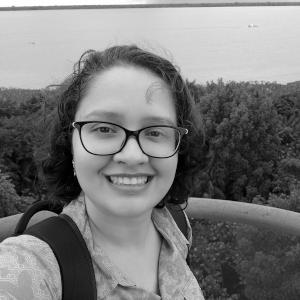
Débora Dutra
I have a master’s degree in Analysis and Modeling of Environmental Systems from the Federal University of Minas Gerais (UFMG) and a bachelor’s degree in Environmental and Sanitary Engineering from the Federal Center for Technological Education of Minas Gerais (CEFET-MG). I am currently a technical training fellow at the National Center for Monitoring and Natural Disaster Alerts (CEMADEN) and I am part of the Tropical Ecosystems and Environmental Sciences Laboratory (TREESlab) at the National Institute for Space Research (INPE). I have experience in studies related to droughts, climate change, fires and forest degradation in the Amazon. My research is linked to the FAPESP/FAPEAM project, which aims to provide a diagnosis and prognosis of forest degradation, due to logging and forest fires resulting from burnings, with the objective of generating scenarios that allow the preventive control of burnings, management of natural resources and preservation of conservation areas.

Marit Verbeet
This year I will finish my studies at Avans University of applied sciences where I study environmental sciences with a specialization in sustainable agriculture at Wageningen University. To gain experience in my field I am at CSR for my research internship. My research is about incorporation of native species in Minas Gerais into sustainable agriculture systems. The intent of this research is to boost the biodiversity in Minas Gerais, while at the same time investigating resilient and sustainable agricultural systems that fit to the community and socioeconomic status.
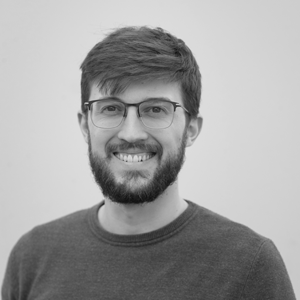
Yannic Rudá Damm
I am an environmental economist and PhD-student at the Institute for Food and Resource Economics at the University of Bonn, Germany. My research focuses on the assessment of externalities of land-use change and conservation policies. To do so, I apply quasi-experimental methods and other impact evaluation techniques to quantify the size and significance of these external effects. As an interdisciplinary researcher, I combine remotely sensed spatial data with socioeconomic, health and environmental micro-level data. This allows me to, for example, examine some of the various consequences of deforestation and the soybean expansion in the Brazilian Amazon.
2022
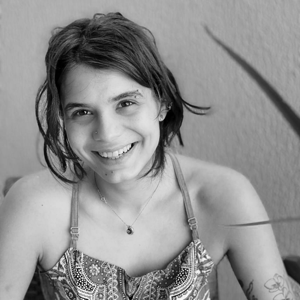
Dalma Versitz
Although I am currently enrolled as a student at Avans University of Applied Sciences in Breda, the Netherlands, where I study Environmental Science for Sustainable Energy and Technology, I was born and raised in Budapest, Hungary. As part of the educational program, I was required to complete an internship, which led me to Brazil to participate in a research project at CSR. My research focuses on how to valorize native species and their use to improve the livelihoods of farmers and workers, promote biodiversity, and sustainable land use.

Ruben Oliemans
Currently studying Environmental Science for Sustainable Energy and Technology at Avans University of Applied Sciences in Breda, the Netherlands. A part of this study program is to do a research internship. This part of my studies brought me to Brazil, where I am doing my research at the CSR. My research is on the role of native species in the biofuel industry of Brazil. The goal is to assess how native species can contribute to sustainable land use by providing local communities the resources required to sustain their land. After this research internship, I will begin my graduation as an Environmental Scientist. After graduation, I will continue studying or start working as an Environmental Scientist.

João Cândido André da Silva Neto
He holds a master’s degree in Geography from the Federal University of Mato Grosso do Sul (UFMS/CPA), a PhD in Geography from the Paulista State University Estate (ESP). He is an Adjunct Professor at the Department of Geography and the Postgraduate Program in Geography at the Federal University of Amazonas, where he integrates the HIDROGEO Laboratory (Hydrogeography, Climatology and Environmental Analysis in the Amazon). He is currently carrying out a post-doctorate in the Postgraduate Program in Geography at the Federal University of Minas Gerais, with support from FAPEAM (Fundação de Amparo à Pesquisa do Estado do Amazonas), within the scope of the Post-Doctoral Support Program – PRODOC. He has experience in the area of Physical Geography, with emphasis on Environmental Analysis, Biogeography, Geographic Information Systems and Remote Sensing.
2019

Hongxi Liu
I have finished PhD in the SURUMER (Sustainable Rubber Cultivation in the Mekong Region) project assessing C dynamic changes by land use change, at Hohenheim University, Germany. Now I am a full time researcher at the school of environment, Beijing Normal University (BNU), China. My research interests lie in assessing land use change impact on ecosystem services. Currently I am working on a project evaluating urbanization impact on environmental capacity. This project cooperates between UFMG and BNU, and aims at modelling how the spatial patterns of urbanization can affect the regional ecosystem services and environmental capacity.
2018

Castigo David Augusto Machava
Graduated in Geography from Universidade Eduardo Mondlane (UEM) – Maputo Mozambique. He is currently a Master’s student in Environmental Systems Analysis and Modeling at the Federal University of Minas Gerais (UFMG). His research consists of analyzing the evolution of land cover and use in the Zambezi watershed and the main associated environmental impacts, as well as performing dynamic spatial modeling using the software Dinamica EGO in order to predict future scenarios of environmental impacts in a perspective of creating better spatial organization, use and environmental management, and consequently in improving the quality of life of communities within the basin.

Laura Sonter
My research interests broadly encompass the themes of sustainability science, human-ecological systems and spatial patterns of land-use change. I have research experience in ecological restoration of tropical rainforests (see Sonter et al. 2011) and in modeling restoration of coal mining landscapes to optimize ecological, social and economic management goals (see Barrett et al. 2011). In March 2011, I began my PhD research project at the Sustainable Minerals Institute (University of Queensland) in collaboration with CSR. This project aims to quantify the conservation conflict and opportunities associated with the expansion of mining activities in Brazil’s major iron mining region, the Quadrilátero Ferrífero.
2017

Alejandra Gill
Environmental engineer graduated from the Faculty of Agricultural Sciences at the National University of Asunción. She is currently working at the WWF of Paraguay as an officer in Geographic Information Systems and finishing her Master’s in Natural Resource Management and Environmental Management of the Territory at the same institution she graduated from. Her research aims to spatially analyze two scenarios of land-use change in the Paraguayan Chaco by the year 2030.

Suveshnee Munien
I am currently a full time lecturer in the department of geography and environmental science, University of KwaZulu-Natal, South Africa. My research focuses on the use of spatial tools and methodologies in understanding human-environment interactions.

Nathalia Nascimento
Geographer, PhD student at the Earth System Science Center (CST) of the National Institute for Space Research (INPE). Her research aims to build land-use scenarios taking into account the decision-making process of local agents linked to agricultural activities in the face of changes in the political and economic contexts in the Amazon region.

Raíza Salomão Precinoto
Raíza has a degree in Forestry Engineering from the Federal Rural University of Rio de Janeiro (UFRRJ) and is currently a Master’s student in Ecology at the Federal University of Rio de Janeiro (UFRJ). His research consists of analyzing the dynamics of forest loss and gain in the São João river basin, in the state of Rio de Janeiro, developing a spatially explicit model for modeling forest cover and making projections of deforestation and natural regeneration events in future scenarios.

Michelle Farfán Gutiérrez
I am currently a full-time teacher in the Department of Geomatic and Hydraulic Engineering, in the Division of Engineering of the University of Guanajuato, Campus Guanajuato. I am also interested in developing the spatial modeling of the fire risk caused by human activities, as well as relating them to climatic variables for the state of Guanajuato, implementing the software DINAMICA EGO.
2016

Letícia Gomes da Silva
Letícia holds a PhD in Ecology from the University of Brasília (UnB). She has a degree in Biological Sciences and a Master’s in Ecology and Conservation from the State University of Mato Grosso (UNEMAT). Her work consists of the ecological modeling of fires and their effects on vegetation and the carbon cycle.

Andrés Burgos Delgado

Gerardo Rodríguez-Tapia
Gerardo is a Science PhD candidate at the Institute of Ecology of Universidad Nacional Autónoma de México (UNAM). His research focuses on quantifying the sensitivity to deforestation of different species of dragonflies in Mexico. He currently develops models of potential distribution to, in combination with deforestation scenarios, infer the impacts on these species in their environment and incorporate them in the software Dinamica EGO.

Robert Davenport
As a doctoral candidate in Environmental Anthropology at the University of California, Santa Cruz, my dissertation research focuses on livelihood and institutional change in smallholder landscapes in the Brazilian Amazon. I combine surveys, ethnography and remote sensing analysis to analyze and compare the unexpected emergence of forest conservation and intentional secondary forest regrowth in former frontiers. Rather than to hypothesize a forest transition driven by high tech agricultural intensification and rural to urban out migration, however, I hypothesize that forest regrowth and conservation may be driven by higher value for manual labor in agroforestry systems and extractive industries, social and institutional structures, mobility between rural and urban areas, and ethnobotanical knowledge and experience on the land (Hecht et al 2014). For these landscapes, I also plan to use DINAMICA EGO to model the impact of ‘policmixes’ on LULUCF.
2015

Estela Herguido
I am biologist and I made a M.S. in Ecology at the Universidad Autónoma de Madrid. Currently, I am a PhD candidate at the Universidad de Extremadura and I am studying the dynamics of the land cover during the last decades in the traditional Iberian open wooded rangelands called Dehesas or Montados. In Dehesas, the lack in tree recruitment is widely reported. My main focus is on land use intensity and its relationships with tree regrowth. I am also modelling the formation of bare soil patches around livestock aggregating elements in DINAMICA EGO, with the objective of studying different management strategies under current climate and future climate change scenarios. I will also use DINAMICA EGO to model the polarization of the processes of intensification vs. abandonment in these systems at the landscape scale.
2013

Jose Luiz Caballero Camacho
Biologist, Master’s student in Environmental Geography at the Center for Research in Environmental Geography (CIGA) of UNAM, campus Morelia. He works on the thesis project “Modeling the spatiotemporal patterns of extraction of wood to produce charcoal in the Cuitzeo lake basin”, which is developed with the Dinamica EGO software.

Carlos Ivan Salinas Espinoza
I am a biologist, Master’s student in Management of Arid Zones Ecosystems, of the Universidad Autónoma de Baja California. My research is entitled “Proposal of a model for identification of areas for conservation.” I am developing land cover scenarios for northern Baja California with Dinamica EGO and they will be combined with distribution models of native Baja California species.

Livia Abdalla
Geographer graduated from Universidade Federal Fluminense – UFF and Master’s student in Cartographic Engineering at Instituto Militar de Engenharia – IME. Her dissertation project is entitled “Dynamic modeling of regeneration of Atlantic Forest vegetation“, which aims to develop modeling based on cellular automata for quantification of estimates and evaluation of future trends on the natural recovery of vegetation from the Atlantic Forest in order to simulate the dynamics of evolution between the classes: secondary vegetation and forest; capoeira and secondary vegetation; grass and capoeira; exposed soil and gras.
2012

Angela Terumi fushita e Eliziane Carla Scariot
Researchers at the Laboratory of Analysis and Environmental Planning (LAPA) of the Federal University of São Carlos, linked to the Center for Biological and Health Sciences. They develop works involving hydrographic basins, Protected Areas and their surroundings in the States of São Paulo, Paraná, Santa Catarina and Rio Grande do Sul.

Michelle Farfán Gutiérrez
Michelle is a PhD. candidate in Geography at Centro de Investigaciones en Geografía Ambiental (CIGA), UNAM, Campus Morelia, Mexico. Her research focuses on spatial modeling environmental dynamics and biodiversity conservation. In the last 4 years she has worked on the estimation of deforestation and conservation in the Sierra de Manantlan Biosphere Reserve, Jalisco, Mexico. Currently she is developing scenarios of change with DINAMICA EGO in combination with potential distribution of species under the tutelage of Dr. Jean-François Mas.
2011

Bruna Silva Santos
I am Bruna Silva Santos with a bachelor’s degree and a degree in Biological Sciences from the Federal University of Espírito Santo – UFES and a master’s student in Animal Biology from the same University. I am part of the Muriqui Project (aimed at preserving this primate and the biodiversity of the Atlantic Forest) and the Vertebrate Conservation Biology laboratory coordinated by Professor Dr. Sérgio Lucena Mendes. My master’s project is entitled “Modeling the dispersion of northern muriqui (Primates, Atelidae)”. This animal is the largest primate in the Americas and one of the 30 most endangered primates in the world. To model the dispersion of the muriqui and propose strategies for its conservation, such as detecting bottlenecks for its dispersion and proposing the creation of ecological corridors, we will use the program Dinamica EGO. Your cellular automaton tools will provide the dynamism we need for spatial analysis. We intend to link the spatial, biological and dispersion data of the muriquis to verify the influence of the landscape on the persistence of the species and the maintenance of the region’s biodiversity.

Kimberly Carlson
As a PhD student at Yale University’s School of Forestry and Environmental Studies, my research focuses on the effects of land use change on people and ecosystems. I am interested in how social processes and ecological dynamics interact and shape land use transitions around agricultural intensification in the tropics. By assessing the full costs and benefits – including traditionally undervalued “ecosystem services” – of competing land uses, I believe that local communities and policymakers can adapt incentives to alter land use trajectories to become more sustainable and equitable. For my dissertation, I am examining how oil palm plantation expansion in Indonesian Borneo affects land use, livelihoods, and ecosystem services. To assess the impacts of oil palm agribusiness at local-to-regional scales, I couple empirical socio-economic, biophysical, and remote sensing assessments with spatially-explicit models of land use change developed in Dinamica EGO.

Marco Follador
After a few years working as an employee of the European Commission in the Climate Change and Air Quality Unit (http://ccaqu.jrc.ec.europa.eu/home.php), I did a post-doctorate CNPQ at CSR. During this year, the focus of the research was the improvement of a tool to optimize the calibration of models developed in Dinamica EGO. The result of the work demonstrated the real capacity of genetic algorithms to increase the model’s performance, finding the correct balance between specialization and generalization.

Laura Sonter
My research interests broadly encompass the themes of sustainability science, human-ecological systems and spatial patterns of land-use change. I have research experience in ecological restoration of tropical rainforests (see Sonter et al. 2011) and in modeling restoration of coal mining landscapes to optimize ecological, social and economic management goals (see Barrett et al. 2011). In March 2011, I began my PhD research project at the Sustainable Minerals Institute (University of Queensland) in collaboration with CSR. This project aims to quantify the conservation conflict and opportunities associated with the expansion of mining activities in Brazil’s major iron mining region, the Quadrilátero Ferrífero.

Isaac Kwadwo Nti
– PhD Candidate at Geoinformatics Research Centre of Auckland University of Technology. New Zealand. Ongoing
– Lecturer/Researcher @ University of Ghana, Computer Engineering Department. From 2006 to Present
– Lecture/Researcher @ University of Mines and Technology, Tarkwa, Ghana. Department of Geomatics. From 2005 to 2006
– MSc Geomatics, Germany.
PHD work – Researching into modeling, simulating and visualising the landuse and cover change. Looking into performance generic platform(DINAMICA) for landuse modeling. Using Auckland Region as the Candidate area to design LUCC, determine the drivers, evaluate best methods of calibration and validation.
